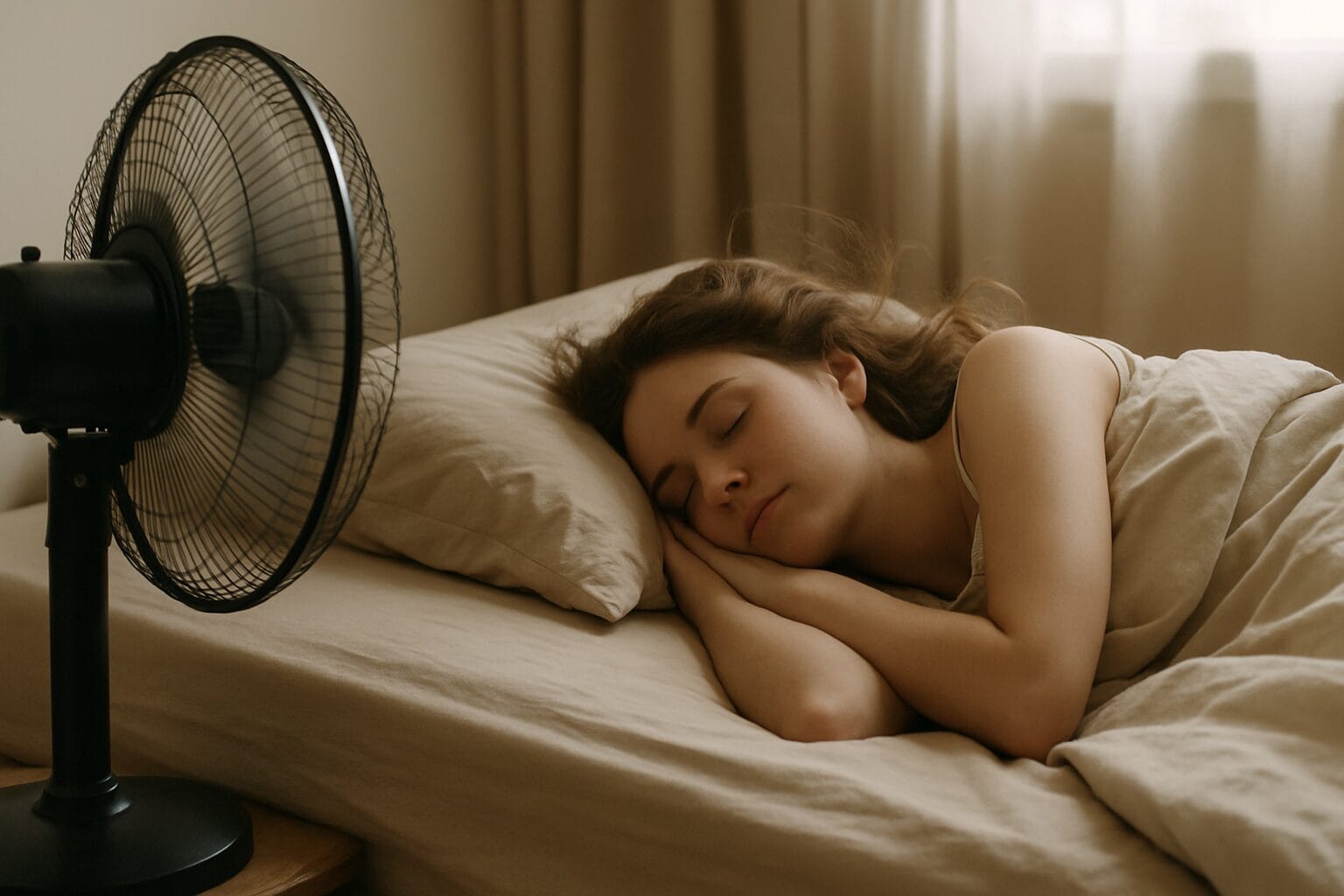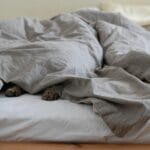There is an opinion that sleeping in a room where a fan is running all night can be harmful to health. Some even talk about possible death. We checked whether this fear is scientifically justified.
In various sources - from sites for travelers to "Parliamentary newspaper» - the danger level of sleeping with the fan on ranges from moderate to fatal. So, exists the belief that such practices could lead to death by suffocation. Other warnings are less drastic - side effects include exacerbations allergies And asthma, dry skin and mucous membranes, cramps and chills.
The first ventilators, including ceiling, appeared back in the 19th century, and fears that they could pose a deadly health hazard spread already in the first half of the 20th century. In 1927, in the Korean newspaper Jungoe Ilbo came out article which reported: "The rotating fan blades create a vacuum directly in front of them, resulting in insufficient oxygen supply to the lungs." These devices have also been accused of causing nausea, choking and facial paralysis. However, the warning did not report any deaths or provide any evidence that the ventilators were deadly.
Nevertheless, in South Korea this belief continued to exist for decades. In 2006, the local consumer protection society warned: If you stay in a closed room with a fan for a long time, you can die due to the fact that the concentration of carbon dioxide in the room, replacing oxygen, will sharply increase. The document stated that from 2003 to 2005, 20 deaths were recorded in the country due to fans and air conditioners turned on during sleep. To reduce the threat, the organization advised installing auto-shut-off timers on appliances, and be sure to open a door or window while they are running to ensure an influx of fresh air.
However, such warnings are devoid of logic. The ventilator itself does not produce carbon dioxide and does not absorb oxygen in the same way as a person does during breathing. The device only creates air flows, but does not change its composition. Moreover, rooms in residential buildings are not airtight - even if you fall asleep in a room with closed windows and doors, it is impossible to use up all the oxygen and suffocate.
There is also concern that the operation of a fan can lead to hypothermia, including death. Hypothermia counts decrease in body temperature to 35 °C, and life-threatening - to 28 °C. However, it is extremely difficult to imagine that a fan will reduce the body temperature of a healthy person so much and that he will not wake up. Dr. Lee Yoon-sung of Seoul University, who performed autopsies on people who allegedly died due to ventilator exposure in the mid-2000s, notedthat they all had serious heart disease or suffered from severe alcoholism.
The exact opposite fear is also widespread - supposedly the device can direct too hot air at a person and thereby provoke heatstroke. At one time, the US Environmental Protection Agency in a reminder about precautions during heat warned, that when the air temperature is above +90 °F (+32 °C), you should not stand directly in front of the air flow from the fan. In 2015, scientists experimentally refuted This point of view - even at air temperatures close to the temperature of the human body, fans do not pose a danger, since the air flows from these devices still contribute to more active sweating and cooling. At the same time, experts write, there is no need to be afraid of dehydration due to active sweating - calculations show that warnings about such a risk are exaggerated. According to existing research, in conditions of low (up to 20%) humidity, using a fan is safe and useful even at air temperatures above +50 °C. For comparison, global temperature record was recorded in 1913 in the USA - almost +57 °C. In conditions of humidity close to 90%, fans are useful for cooling the body at air temperatures up to +38 ° C.

It turns out that using a fan while sleeping can in no way lead to death. Moreover, how found out American pediatricians in 2008, the operation of this electrical device in the room where an infant under one year of age sleeps, on the contrary, reduces the risk of sudden infant death syndrome, carrying away annually the lives of more than 30,000 children, by an impressive 72%. The decrease was most pronounced in infants who were forced to sleep in hot conditions or were in high-risk groups—sleeping on their sides or stomachs and not using a pacifier.
However, fans can actually render some negative effect on health: due to active air circulation, it increases existing allergies to pollen or indoor dust, as well as dry out the mucous membranes of the eyes and skin. However, all these negative phenomena, firstly, can occur when using a fan both during sleep and while awake, and secondly, these effects are very easy to neutralize. So, if you are prone to allergies to pollen or house dust, relieve the condition Maybe cleaning, and regular cleaning, and not just before using the fan. If the air in the room is too dry, then the mucous membranes and skin will suffer in any case; a fan will only aggravate the problem. That is why it is so important to monitor air humidity and maintain its comfortable level. A similar story with asthma — pollen and indoor dust can aggravate its symptoms, so if a person suffers from this disease, you should not use a fan in unclean rooms.
Epilepsy Action Australia, a non-profit organization that helps people with epilepsy, says rotating fan blades can also call seizure, but only in people with photosensitive epilepsy, in which watching flickering or moving objects can trigger a seizure. However, to avoid trouble, it is enough to simply not look at the running fan, and during sleep such people have nothing to fear at all. In children with epilepsy, hot weather itself and subsequent sudden cooling of the body Maybe cause convulsions, but the reason is precisely in body temperature, and not in the operation of the electrical appliance.
Thus, common concerns about sleeping in the same room with a fan on are unfounded. This electrical device cannot blow out all the oxygen from the room, replacing it with carbon dioxide, cool a person to death, or provoke lethal overheating. In conditions of low humidity, fans are effective at almost any temperature, and in high humidity - as long as the thermometer does not rise above +38 ° C. The biggest troubles that a fan can cause are dry mucous membranes and skin, as well as worsening allergy or asthma symptoms. However, the operation of a fan can lead to such consequences regardless of whether a person is sleeping or awake, and the negative effects themselves can be easily eliminated by regular cleaning and maintaining a sufficient level of humidity in the room.
Cover image: DALL-E
If you find a spelling or grammatical error, please let us know by highlighting the error text and clicking Ctrl+Enter.






